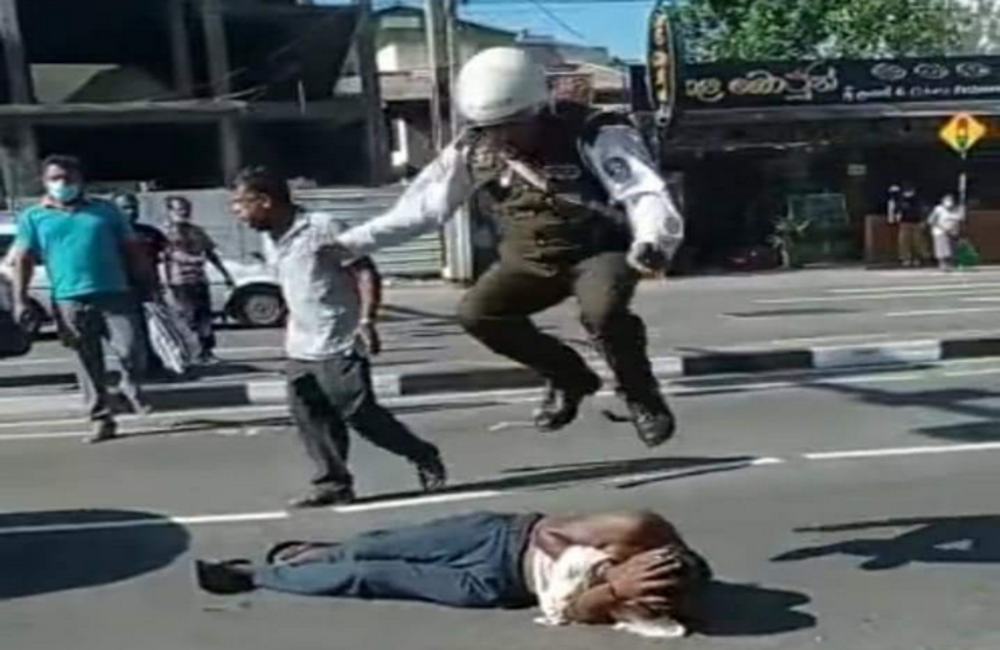Featured
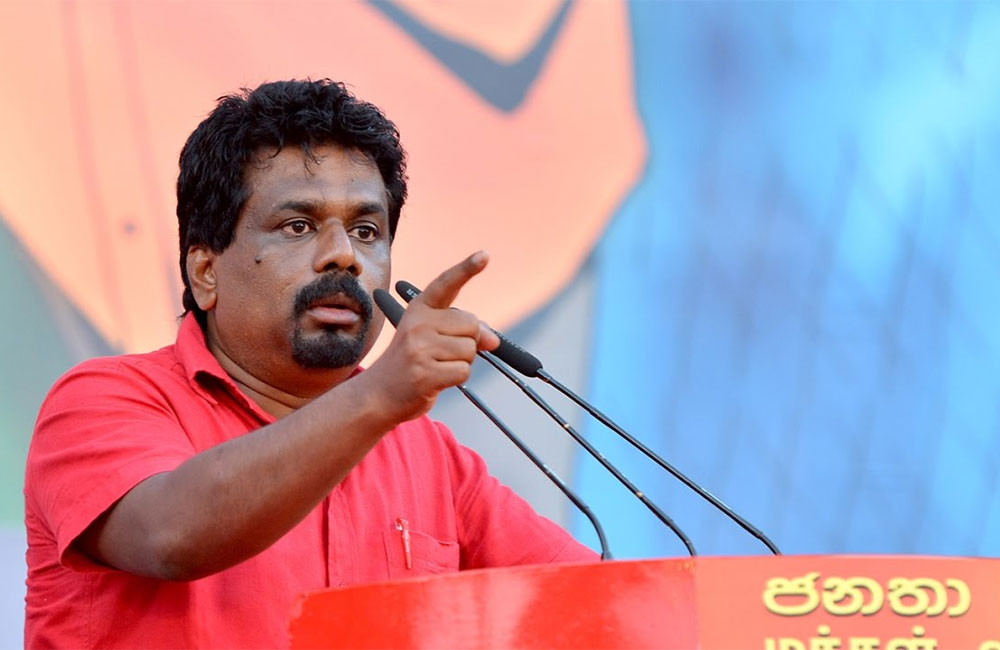
The Crisis and Anura Kumara
" are ready to take up the leadership of the country”, declared Anura Kumara Dissanayake, leader of the Jathika Jana Balavegaya (National People’s Power - NPP) and the JVP at the Convention held on the 20th December. He said so in a tone to impress the audience that it was the latest strategy that his party was going to adopt. In this effort, he made an attempt to paint a picture that his party, unlike the other two parties, the UNP and the SLFP, has no previous experience in the rule of the country and therefore, the JVP is different from the other two mainstream parties, and could claim for an uncorrupt heritage. There is some truth in what he says, but in fact, there are some flaws in the assertions that he has underlined.
History of the JVP in brief
The JVP is now 57 years old; its origin can be traced back to 1964. Its parliamentary history is also as old as 27 years. It can be considered as a party that has attempted to seize the ruling power using various tactics, not just one. In 1971, it tried to seize power through an armed insurrection. In 1982, it contested the presidential election, not to win, but to deprive the SLFP of its place and appropriate it upon their party. Later, it assumed an underground political path under the cover of the ban imposed on the party in 1983, and launched a horrendous uprising in 1987-89 to seize power. In 1994, the JVP abandoned the violent path skillfully, and switched over to the Parliamentary system following the defeat of that uprising.
Then in September 2001, the JVP entered into a Memorandum of Understanding (MOU) with the United Front Government to form a probationary government. Again in January 2004, it entered into an Electoral Alliance called the United People's Freedom Alliance with the United Front. Consequently, having contested the election under the alliance, it was able to increase the number of seats it had in the parliament from 16 to 39. It was able to secure four powerful ministerial portfolios in the coalition government headed by President Chandrika. The JVP withdrew from the coalition government when the President decided to absorb a group of defectors from the UNP to the government rather than depending solely. Again the JVP supported Mahinda Rajapaksa at the 2005 presidential election. At the presidential election 2010, JVP was instrumental in bringing Sarath Fonseka to the fore as the common candidate to defeat Mahinda.At the 2015 presidential election it indirectly supported the program launched to defeat Mahinda.It also secured the position of Chief Opposition Whip in Parliament, with the patronage of the Yahapalana regime, without having a legal entitlement to it. The JVP contested the Presidential Election 2019, not to win it, but as a means of increasing its power in parliament. But it failed to achieve the desired objective. At present, in view of the apparent confusion in the right-wing political camp in the opposition, the JVP seems to believe that it might stand a chance of securing the ruling power at the next election.
The ideological milieu
It seems that the JVP has devised a special line of reasoning to prepare the ideological background to achieve this goal. Accordingly, the country has been destroyed by the two corrupt political parties that had ruled the country alternately. The JVP is not as corrupt as those political parties and also has not ruled the country like them. Therefore, they seem to believe that they possess the legitimate right to save the country that has been destroyed by both groups. But it goes without saying that things in the country are not as simple as they think. It is not only the ruling parties that influence the ideological milieu of a society; there are other groups and forces also that influence it. It was not a ruling party, but an ideological school of thought that has socialized the belief that the kidney disease prevalent in the Rajarata region has been caused by the use of agro-fertilizers and agro-chemicals. Also, the episode of drugs alleged to have been introduced by Muslims to make Sinhala women sterile was fabricated and socialized by a similar group. Although anti-Tamil racism has now been abandoned, the JVP has played a major role in inculcating a progressive-looking anti-Tamil racist vision in the minds of the Sinhala Buddhists community. The principle of violent struggle and the practice adopted to launch it could be considered as an important factor that has impacted the state of current decay, bankruptcy and failure of Sri Lanka. Although theft is a serious crime, it can be said that the damage inflicted on society by the destroyers of wealth is greater than the damage caused by the thieves. Even stolen wealth enters the circulation of money in various ways. But the wealth that is destroyed once does not enter the circulation like that. The devastation wrought on Sri Lanka by violent and rebellious movements is enormous. It can be said that not only fraud and corruption, but also destruction of wealth has contributed to the current crisis in Sri Lanka.
The JVP may have achievements to be happy about in its parliamentary history; but it is important to note that it has not been able to become a model that could be emulated by the political parties in Sri Lanka. The parliament was in a state of corruption when the JVP joined parliamentary politics. Plunder of public property had become a significant and permanent feature of state administration following the establishment of the presidential system in 1978. The incumbent presidents used to adopt unlawful means to enable their team of MPs to amass wealth in order to keep them loyal and contended. In this process, the presidents allowed the MPs to transact business with the government. As a result, some of them have acquired valuable government land and become planters, some have become large contractors, and some others licensed businessmen. Liquor licenses were issued through MPs during the reign of president Chandrika. So, a large number of MPs have become tavern owners. Such practices can be considered as serious offenses punishable by depriving the MPs involved in them, of their positions and even civic rights. But the presidents in power prevented the law from being enforced against them. This situation has led to corrupt Parliament to a massive extent. Although the JVP had the potential to make a vehement protest against this ugly practice in Parliament and change the situation, for whatever reason, it refrained from talking about it. In doing so, it has deprived itself of the opportunity to gain greater recognition among the people.
What is the solution?
Although the general conduct of the JVP MPs may be relatively better than that of the MPs of other political parties, the policy they have followed in regard to duty free vehicles is blemished. The system of giving duty free vehicles to MPs in such a way that they could sell them and make money can be considered as an illegal and corrupt system that gives the MPs undue privileges. It can be considered as a practice contrary to the accepted democratic parliamentary traditions, and also one that has caused a huge financial burden on the country. Later, the practice of offering duty free vehicles had to be extended to higher ranking officials in the public service also, because those who initiated it wanted to justify the system maintained for the Members of Parliament. In the end, it became a wasteful and corrupt system incurring an unbearable burden on the country. Now, not only the politicians, but also the government officials who fall into higher echelons or supra category of public administration use luxury cars costing over Rs. 30 million and incurring highest cost of fuel consumption. It can be said that the corrupt system of offering duty free vehicles to MPs and public servants has also contributed to the state of bankruptcy of the country. JVPs claim that “we haven’t kept the money realized from the sale of duty free vehicles with us except that we have given them to the party fund” will not rectify the error. The money that has gone to the JVP party fund is nothing but the money that should have gone to the government treasury. The JVP cannot exonerate itself of this fault on account of its toleration of such a wasteful and destructive system whilst at the same time being a party to it as well.
The speeches made at the convention held on the 20th do not show that the JVP has a profound analysis of the crisis facing Sri Lanka and how to overcome it.Also, the pamphlet titled "A Quick Approach to Overcome the Crisis" circulated on the occasion of this convention too, does Wenot offer an objective and insightful analysis of it. What is their true analysis of the crisis facing Sri Lanka? What are the solutions they offer to solve the crisis? There is another major question to ask. What do they intend to do if there is a collapse of the state before the next presidential election? So far, only Champika Ranawaka and Ranil Wickremesinghe have shown some sensitivity to this question. What will happen if the state collapses with the collapse of the government, before the next election?
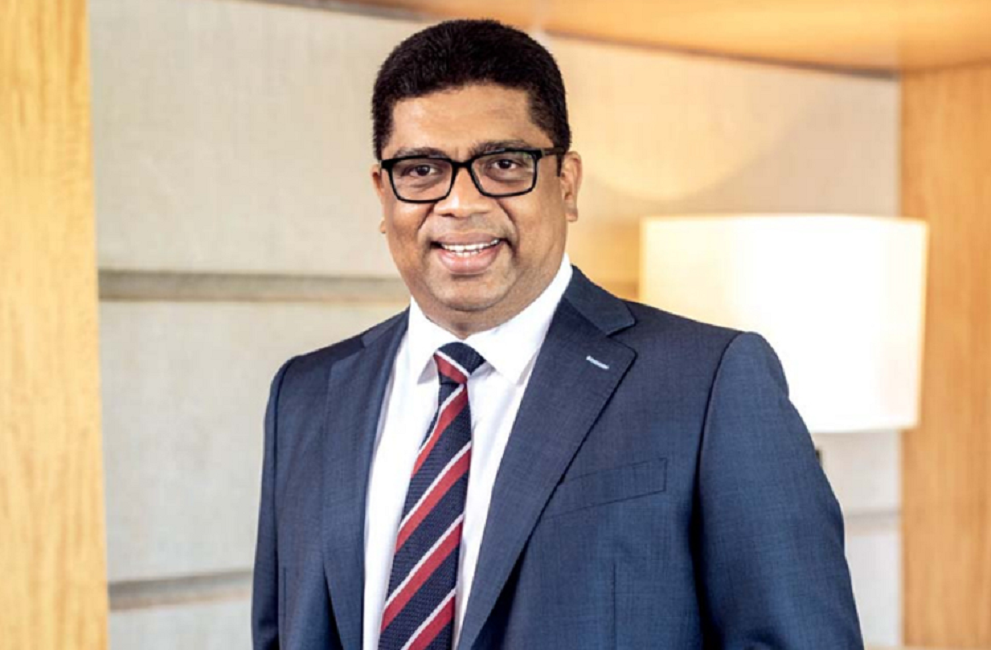
Krishantha Cooray:"One who will go ahead of public opinion instead of tamely following in its footprints"-Karu
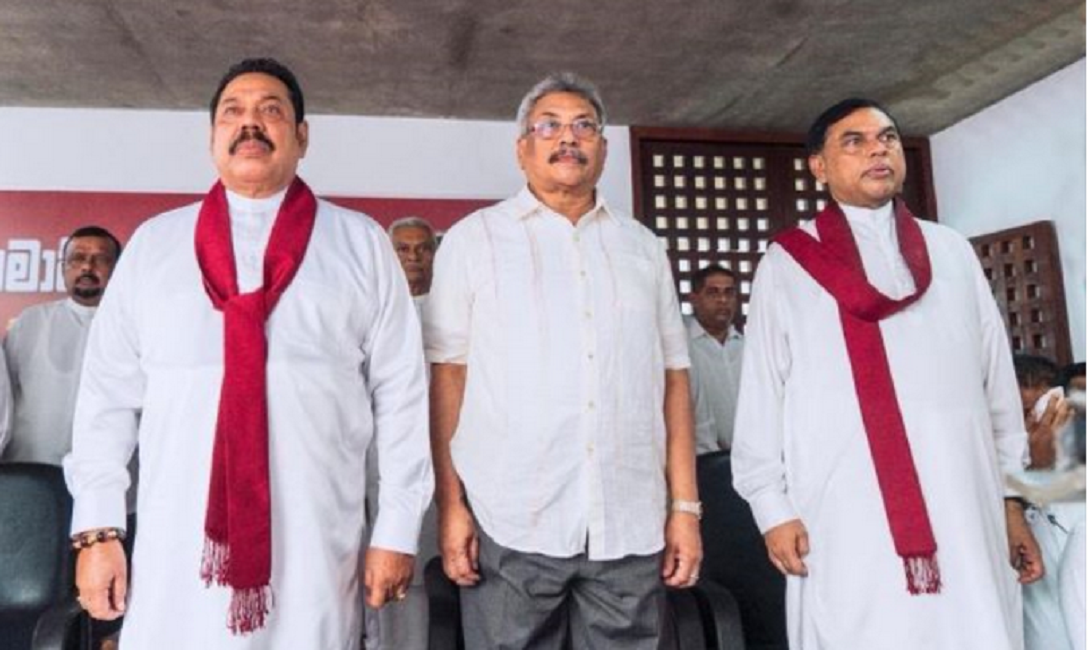
Rajapaksa regime under multiple pressures
By P.K. Balachandran
The regime of the Rajapaksas, established in November 2019 and consolidated in August 2020, is facing multiple problems, both domestic and external, economic as well as political.
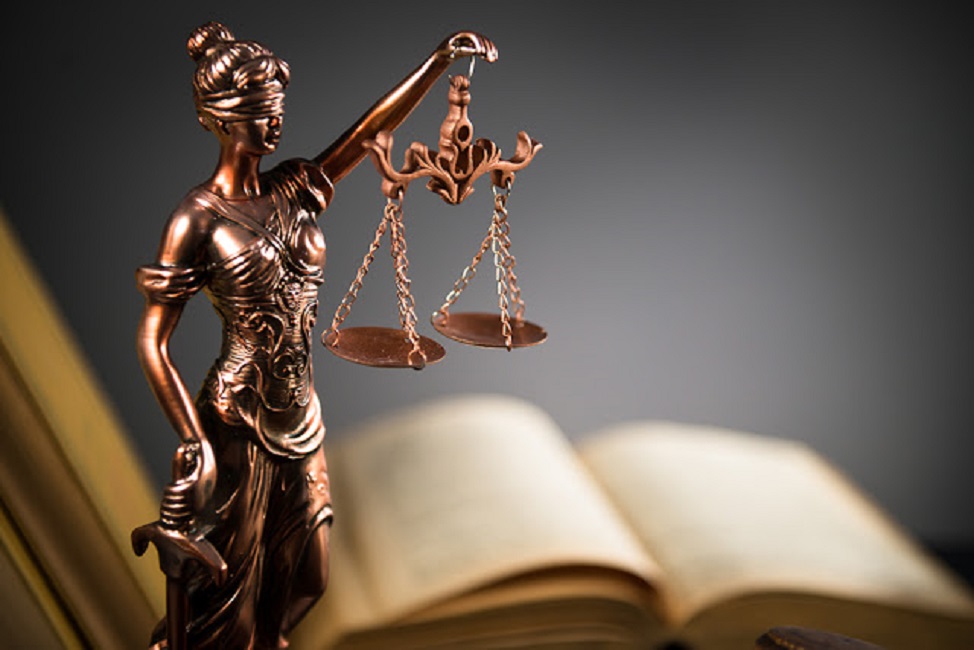
What is wrong with the judiciary?
By Victor Ivan
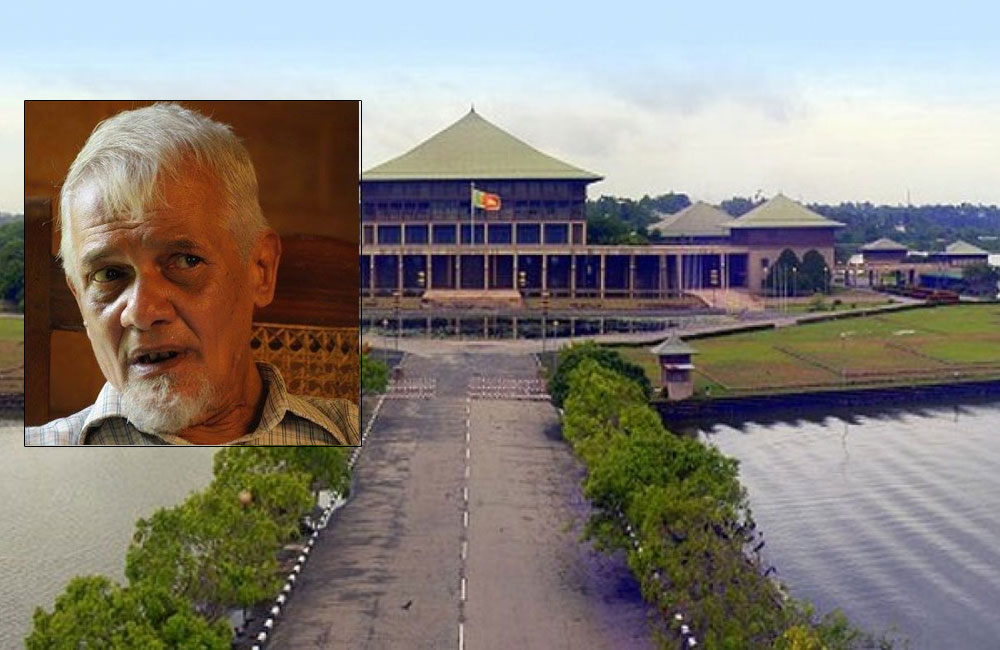
Rescuing the Parliament first, before the country
The Parliament can be considered as the first respondent responsible for the collapse of the political and social system of Sri Lanka.I would like to begin this article with a prediction made on Sri Lanka, by Professor Johan Galtung who is considered to be a distinguished scholar of international repute, during a discussion I had with him.
Galtung is a Norwegian professor and the principal founder of the discipline of peace and conflict studies. He is also a renowned sociologist, mathematician, historian, economist and a political scientist. Now he is in his 90s. I have attended two of his workshops held in Austria and published the Sinhala translation of his book "An Introduction to Conflict Resolution", titled “Gatum Nirakaranaya Pilibanda Sidhhdi Adhyanayak”
Galtung's forecast
Galtung may have visited Sri Lanka about twenty times, from time to time. The following is a remark he made about Sri Lanka in the course of the conversation I had with him when he visited Sri Lanka during the tsunami disaster. He told me that he found a copy of the English translation of my book on judiciary of Sri Lanka titled “Nonimi Aragalaya”, the “Unfinished Struggle” which I have written and published, and was able to read about half of it by the time I met him. Having said that he made the following comment:“In any State, the Supreme Court is invariably ranked in the apex of the institutional hierarchy, and all the other power centers and institutions of the State are ranked at a lower level compared to the Supreme Court ; when reading your book, the impression created in me was that apparently, the Supreme Court of Sri Lanka is caught up in a rapid flood, and if it is so, all the other institutions and power centers of the country should be caught up in a greater flood, and such a situation can not be considered as a normal situation, but an extremely abnormal condition,” he said.
Evidently, Professor Galtung has been able to perceive the “Whole” through one aspect of it. Ostensibly this observation (of Galtung) and several other opinions and ideas have influenced the studies and observations he has made on the State of Sri Lanka and its society.
According to my observations, the end of the internal Civil War was the best opportunity that Sri Lanka had for adopting structural reforms. By the end of the war, there was a major breakdown in the State and the social system. The government was able to suppress two armed insurrections launched by Sinhalese and Tamil rebels. Yet, the damage caused by them to the state and the society was immense. This situation has also contributed to the failure of the State and its rapid deterioration. Since 1977, looting of public property has become a regular feature of the state administration which too, has been a major factor in the deterioration of the State. Adopting structural reforms had become an indispensable condition to rebuild the nation which had been disintegrated and torn apart at the end of the internal Civil War and to recreate the State which was lying in a state of acute degeneration caused by rampant corruption and to give impetus for a beneficial forward move of the country. But, the rulers who were obsessed and blinded by the victory of the war failed to see this reality. By then, the Parliament too was in a state of maximum decline. Therefore, the Parliament was not able to understand the reality.
Corrupting the Parliament
Even before 1977, we did not have a Parliament with a sound democratic vision; yet we had a parliament which was efficient and free of corruption. Though the heads of State lacked a strong forward vision they did not plunder the public property under their custody.
It was with the establishment of the presidential system of governance that the parliament was turned upside down. With that, the Parliament lost its supremacy and became a mere rubber stamp of the President. Consequently, there occurred a major diminution in the recognition of parliamentarians. So, President Jayewardene allowed the MPs to transact business with the government violating the democratic principles and the law, to keep them happy in case they were frustrated. Consequently, some of them became landowners by acquiring land belonging to the government while some others became government contractors and licensed timber, rubble and sand dealers.
All the other presidents who succeeded JR Jayewardene also continued this corrupt system adding new elements to it. During the tenure of President Chandrika, about 1,500 bar licenses were distributed through government MPs.Under the circumstances, a substantial number of MPs became bartenders and tavern owners either directly or indirectly. This corrupt system led to deprive Parliament of its recognition. It also caused to deprive the legitimacy of the MPs. Though this system was contrary not only to democratic norms and principles but also to the law of the land, almost all Presidents, protected the MPS engaged in business transactions with the government by using their power of immunity. The best example of this situation is the appointment of Albert Silva as a Chit MP for Kamburupitiya electorate by President JR Jayewardene when the former was disqualified to sit in Parliament, by a panel of judges, including Chief Justice Neville Samarakoon, for possessing kerosene license issued by the government when he was elected to the Parliament from the UNP in 1977. This shows that it is not only the heads of State who were relatively ignorant, had their education in underprivileged schools and hailed from less privileged circumstances, but also those who have studied in super grade schools such as Royal and St. Thomas' college, and were hailing from elite families that had played the role of plunderers in the state administration .Sarath Nanda Silva who turned the judiciary into a stinking place had his education in Trinity College, Kandy. DS Senanayake, Sir John Kotalawala and SWRD Bandaranaike were educated at St. Thomas' College. Sirima Bandaranaike and Chandrika Bandaranaike were educated at St. Bridget's Convent and JR Jayewardene and Ranil Wickramasinghe at Royal College. None of these super grade colleges have been able to produce leaders who are capable of rescuing Sri Lanka, except mediocre leaders.
The Role of the Parliament
The changes occurred in the moral behavior of parliamentarians resulted in changing the nature and the quality of the parliament as well as the political system. The struggle for political power became a competition for securing the right to plunder public property in addition to gaining power to rule the country. The benefits of plundering public property also flowed to the hands of the members of respective parties in various ways. Adopting a policy that allowed all those interested in plunder to do so became a necessary prerequisite in order to sustain and pursue this corrupt practice without hindrance. Moreover, a system was in operation in which ransoms were paid to those who demanded them, at the expense of the state. This corrupt system not only diminished the revenues of the treasury and plunged the country to bankruptcy, but also corrupted the entire institutional system, including the social system.
The damage done to Parliament is also immense. (A) Legislation (b) Fiscal policy (c) Supervision of the other two power centers that is the Executive and the Judiciary (d) maintain peace, unity and stability in the country can be considered as the four main responsibilities of Parliament. But the predatory nature of Sri Lankan parliamentarians has completely blunted the sensitivity that the Parliament should possess in regard to these four elements.
The Parliament had lost its ability to monitor the misconduct of Presidents, as the MPs themselves of the ruling party were involved in the looting of public property in connivance with the Presidents. It can be said that the relationship between the Parliament and the Judiciary too, had assumed a dubious nature. In this backdrop, the Parliament was not concerned with the monitoring of the functioning of Judiciary. Similarly the judiciary too, prevented itself from monitoring the activities of the Parliament and the MPs.
In India, criminal cases against MPs, if any, must be heard and completed within a year. If there are appeals, they must be heard within three months. In the event a person with a criminal record is given nominations, the reason for that should be explained by a public notice. All such conditions relating to the Members of Parliament can be regarded as provisions stipulated by the Judiciary and not by the Parliament.
But the policies of the judiciary on parliamentarians in Sri Lanka are extremely lenient. A significant number of MPs have criminal cases; some of them are more than 15 years old. It was the judiciary that has been used as the basis when the salaries of the Members of Parliament were revised, rather increased. The ruling party always tends to raise the salaries of the judges generously when it wants to increase their salaries. After a while, they increase their salaries claiming that there is a disparity in their salaries compared to that of the Judges. Apart from that, and as usual, they claim arrears as well. In keeping with the new salary increments offered to the judiciary, the monthly salary of the MPs too, is scheduled to be increased to Rs. 450,000. Along with that they are supposed to receive a large sum of money by way of arrears as well.
Country or the Parliament?
The ugliest feature of the Sri Lankan Parliament is that none of the MPs in Sri Lanka voice their opinion against this illegal, anti-democratic and heinous system that reigns within the Sri Lankan Parliament. The most unfortunate thing is the tendency of both the traditional and alternate leaders in Parliament to adopt measures that would perpetuate this illegal, anti-democratic, corrupt and shameful system in formulating the so called plans to rescue Sri Lanka.Yet, it is strange to note that no one speaks for a change in this corrupt system. If an alternate leader, whoever it may be is prepared to rescue the parliament first, before rescuing the country, the people of this country must entrust the responsibility of saving the country to him.
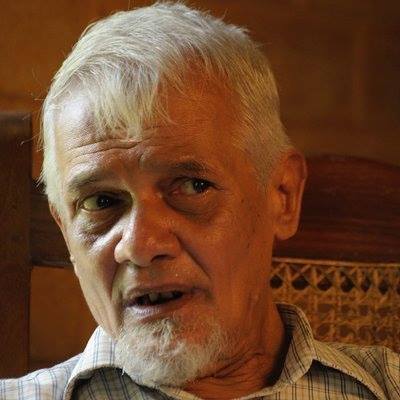 Victor Ivan
Victor Ivan
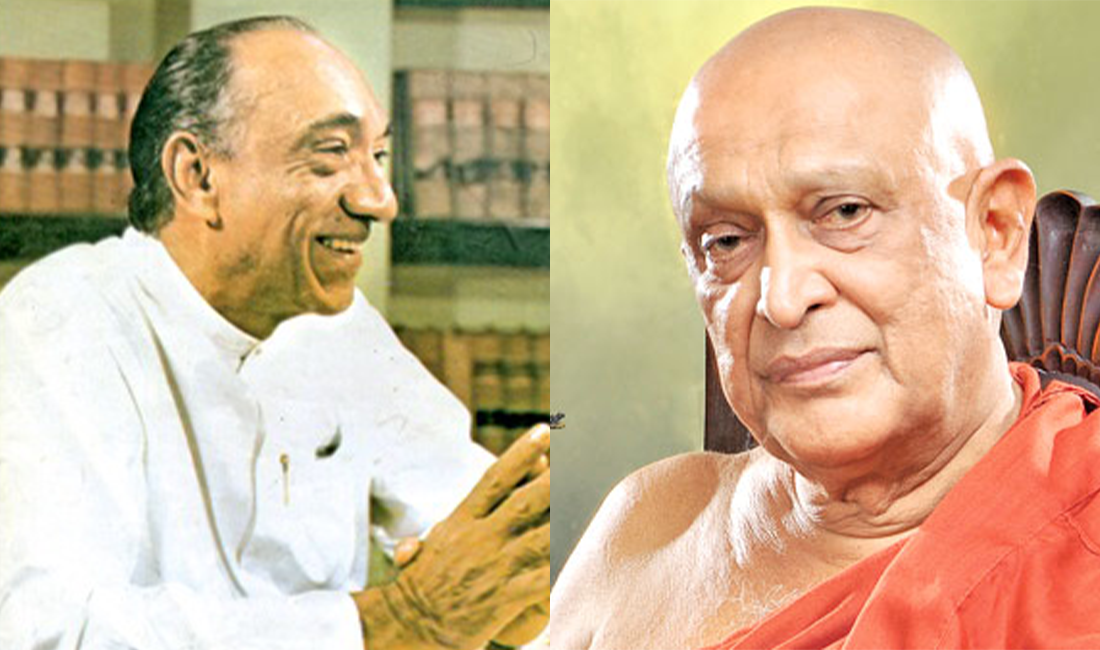
The presidency was supposed to save us from oblivion, but what can save us from the presidency?
In 1978, J.R. Jayawardena ushered in the executive presidential system in Sri Lanka as a panacea for all the nation’s woes.
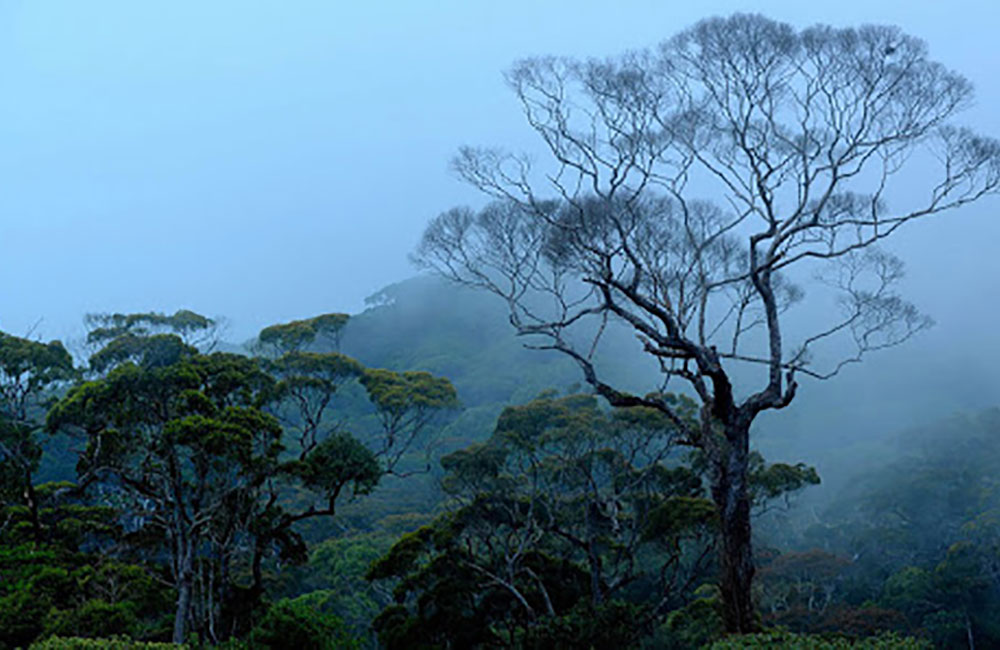
Art of money making is not an art of living (GDP vs GNH)
The world faces huge crises now, such as the economic crisis, the ecological crisis and the social crisis. The world has passed lots of ecological crises both natural and manmade. Why do people destroy nature? There is a main reason that could be found for environmental destruction in the world. The world thinking pattern focuses on increasing economic value and taking care of economic goods. That is the main focus of every state and many people that live in the World. Since five hundred years ago, knowledge has been used to protect the economy and their patterns. William Petty introduced the Gross Domestic product (GDP) to measure economic value as a need of the King of England in 1660.
GDP is the total monetary or market value of all the finished goods and services produced within a country's borders in a specific time period. As a broad measure of overall domestic production, it functions as a comprehensive scorecard of a given country’s economic health.
After Bretton Woods agreements in 1944, the world considers GDP as the best indicator to measure development in a country. If any country has a higher GDP rate that is considered as a developed country while another state with a lower rate is considered as an under developed or poor country.
However, GDP has many problems on its measurement. For example, if some people or community grow their foods and eat themselves without buying any food in the market, that activity or other self-sustainable activities or services cannot be measured by GDP.
GDP concerns self-sustainable communities and states as poor. If any communities want to be developing according to GDP, the community has to give up self-sustainable activities and should join with the market economy.
Indicators determine policies. The almost universal use of GDP-based indicators to measure progress has helped justify policies around the world that are based on rapid material progress at the expenses of environmental preservation, cultures, and community cohesion.
Economic development could not sustain the natural world. That is the main debate that we have after Covid-19. With the lockdown, lots of people in western countries started to talk about the value of human health and happiness. As the Buddha said, “Aroghya Parama Labha Santushti Paraman Dhanan” (good health condition is our profit and happiness is our uncountable capital).
We knew that money couldn’t bring healthy life for the people and it could not bring real happiness for the society. That’s why we are in trouble as a global village. People create fear for every animal and plant. They destroy every water shade and jungle. They destroy natural mountains and create garbage mountains. No one feels safe about the future.
That is the reason why we need an art for living ‘which can bring happiness, health and safety for the world, animals, trees and human being”.
The Royal Government of Bhutan adopted the Gross National happiness (GNH) index in November 2008. GNH has four pillars: the promotion of equitable and sustainable socio-economic development, preservation and promotion of cultural values and conservation of the natural environment, and the establishment of good governance.
The GNH indicators have been designed to include nine core dimensions that are regarded as components of happiness and well-being in Bhutan, and are constructed of indicators which are robust and informative with respect to each of the dimensions. The nine dimensions were selected on normative grounds, and are equally weighted, because each dimension is considered to be relatively equal in terms of equal intrinsic importance as a component of gross national happiness. Within each dimension, several indicators were selected that seemed likely to remain informative across time, had high response rates, and were relatively uncorrelated. The nine dimensions are:
-
Psychological Well-being
-
Time Use
-
Community Vitality
-
Culture
-
Health
-
Education
-
Environmental Diversity
-
Living Standard
-
Governance
In this perspective, happiness comprises having sufficient achievements in each of the nine dimensions. The Royal Government of Bhutan has 60% of natural forest cover out of the total land area of the country. The King of Bhutan promised not to destroy the forest cover of the country and protect its rich bio diversity for sustaining not only the country but also the global village on this planet earth.
Not only Bhutan but many indigenous communities try to protect their traditional way of living with mother earth. They know that real happiness entails protecting the animals, trees, rivers and ecosystems with the people. We need a holistic way of thinking and living to protect our society and natural world. Now we are late but not too late for an art of living.
Raveendra Kariyawasam
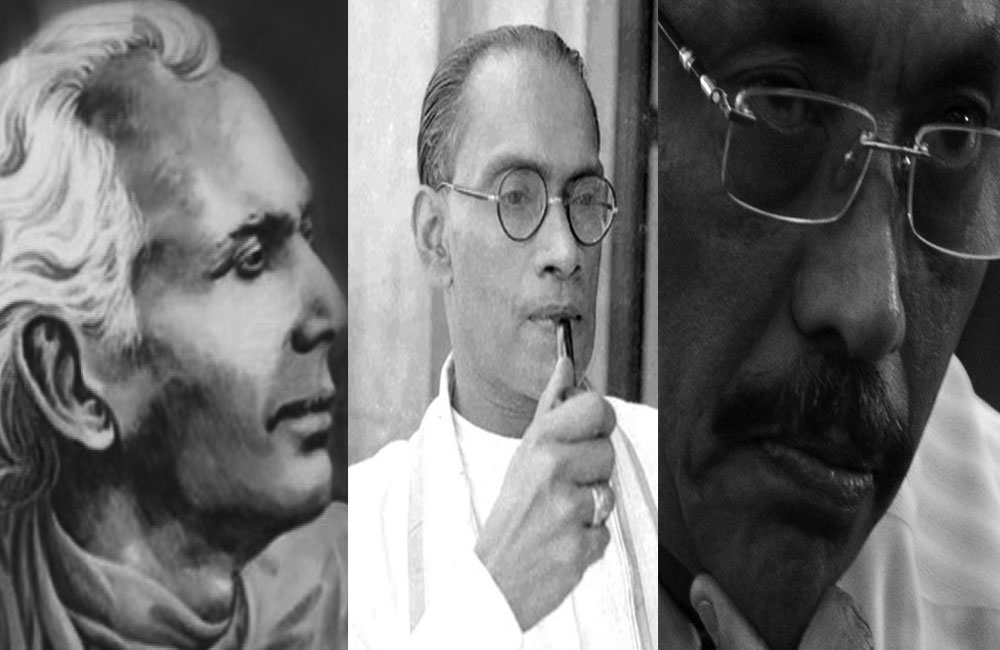
The end of an era of extremism in Sri Lanka
The end of an era of extremism in Sri Lanka
By Victor Ivan
Professor Sirima Kiribamuna, making a lengthy review of the Mahavamsa, the great chronicle of Sri Lanka has extolled it as “the culmination of the historical thinking of the ancient Sinhalese”. Contrary to what professor Kiribamuna has said, the Mahavamsa cannot be considered as a book of history written for the purpose of recording the history of the Sinhalese race. It is more an account of the history of the Theravada Buddhism of Sri Lanka. However, the author of the Mahavamsa has recorded the history of Theravada Buddhism as something in which the Sinhala race and Buddhism have been inextricably linked.
On the other hand, Amaradasa Liyanagamage, who can be considered a better and more courageous historian, has pointed out that according to the Mahavamsa, the Lord Buddha by his clairvoyance, had foreseen that, after his Parinirvana, the passing away, the Buddhism (the doctrine) will finally be established and preserved in Sri Lanka; on the same day, Prince Vijaya, a member of the Sakya clan, the clan to which the Buddha also belonged to, with the blessings of the Buddha set out from Sinhapura of Lata Rata accompanied by seven hundred followers lands on the shores of Thambapanni, a location in the island of Lanka; the Buddha spoke to the God Sakka , the Lord of gods, and entrusted him with the task of carefully protecting prince Vijaya with his followers, the new settlers arriving in Sri Lanka. The link the author of the Mahavamsa has made between the origin of the Sinhala race and Buddhism with this narrative is not only unauthentic but also will not augur well for the Sinhala race or Buddhism.
In the pre-modern era, the Mahavamsa remained in the form of an Ola script written in the Pali language. So, it can not be considered to have made a great impact on the people of that era. The Mahavamsa became a book that affected the psychology of Sinhala Buddhists in Ceylon only after it was translated into Sinhala and published as a book during the British rule as a part of their project on the history of the country.
Anagarika Dharmapala
In the pre-modern era, race and religion except caste did not constitute a dividing line. It was only during the modern era that ethnicity and religion became a dividing line between the peoples of Sri Lanka. According to Bryce Ryan, the bitterest conflicts in Sri Lanka which erupted from the end of the nineteenth century until about 1925 had been among different castes and not among ethnic groups. Anagarika Dharamapala was the theorist who had made use of the alleged connection between the Sinhala race and Buddhism as illustrated in the Mahavamsa, and developed a simple theory of militant racism for Sinhala Buddhists at the beginning of the modern era.
Anagarika Dharmapala was the most recognized figure by the Sinhala Buddhists among the leaders who emerged in the aftermath of Sri Lanka moving into a modern era. As Kumari Jayewardene has rightly put it, he was “the only aristocrat who walked with his head held high in the midst of a crowd of humble Sri Lankans who were cowardly shrinking and crawling on their bellies.”
Dharmapala was the staunch proponent of a policy that treated all non-Sinhala Buddhists living in Sri Lanka as Pariahs or outcasts and maintained that only the Sinhala Buddhists have the right to claim for Sri Lanka. He blamed not only the Europeans who conquered Sri Lanka but also the minorities living in the country for the decadence of the Sihala nation and Buddhism. He referred to all those who consumed beef (he called beef Gerimas) as Vasalayas or social outcasts. The militant and racist ideas spread by Dharmapala among Sinhala Buddhist people affected the Muslims and Burghers devastatingly while he was alive.
’56 Revolution
The Sinhala-Buddhist militant racism introduced by Anagarika Dharmapala continued to act as a cancer pervading the post-independence Sinhala Buddhist community. There was a growing discontent and unrest among the community of the Buddhist Sangha over not restoring Buddhism, to the level it enjoyed during the reign of ancient Sinhala kings despite a considerable time having lapsed after independence. In view of the prevailing unrest among the Buddhist priests, Venerable Henpitagedara Gnanaseeha Thero, Gunapala Malalasekera and NQ Dias launched a strategic program to enlighten the Buddhist priests and the Buddhist people of the circumstances and win a Sinhala Buddhist government. The movement of the Buddhist Commission constituted the strongest component of this program.
The change of government in 1956 was arguably the greatest revolution that took place in the sphere of Buddhism since the Buddhist revival movement that emerged during the colonial period. The Buddhist monks acting as the driving force has been the most important feature of the ’56 revolution.
Prime Minister Bandaranaike abolished the prominence accorded to English and made Sinhala the only official language, contrary to the agreement reached between the political parties to grant the status of an official language for both Sinhala and Tamil languages. At the same time, the UNP too appeared for a Sinhala-only policy discarding its old language policy. Only the two leftist parties (the LSSP and CP ) appeared for the language rights of both Sinhala and Tamil communities.
After Bandaranaike
The Sinhala-only policy of Bandaranaike did not stop at pushing the Tamil people of Sri Lanka into a fierce struggle for their language rights, it also led to removing the Sinhala youth from bilingual education and restricting their medium of instruction only to the Sinhala language. Prime Minister Bandaranaike was eventually assassinated as a result of a conspiracy of Buddhist monks.
But none of these developments led to weaken the Sinhala-Buddhist supremacy but to strengthen it. The only capacity it possessed was to bulldoze the rights of minority ethnic groups by employing the majority power it had; so it played a destructive role rather than serving as a progressive force. Before long, the LSSP and the Communist Party, the only leftist political parties that worked among the Sinhalese people that did not endorse or recognize the domination of this movement, formed a coalition with the SLFP and pushed themselves also into a point of repulsive politics in which they opted to hold political protest rallies shouting slogans tinged with communal flavor like “dudlige baday masalawade “(Dudley’s belly is full of masalawade). Thereafter, the new left that emerged in the form of the JVP also proved to be a political party that worked accepting the Sinhala-Buddhist supremacy, since its inception. Although the UNP formed a coalition government with the Federal Party in 1965, it also collapsed during the latter part of its term as it feared to transcend the boundaries set by the Sinhala Buddhist supremacy. The next coalition government formed by the SLFP, LSSP and the Communist Party adopted laws that led to oppress the Tamil people while maximizing the supremacy of the Sinhala Buddhist chauvinism. These ruthless laws eventually pushed the Tamil people to launch a fight for a separate state.
Defeating Prabhakaran
Prabhakaran’s Eelam War caused to further strengthen the dominance of Sinhala Buddhist supremacy in the Sinhala society.
As the ideology of Anagarika Dharmapala was no longer adequate to overcome the new challenges, there emerged new ideologies such as those promulgated by Gunadasa Amarasekara, Nalin de Silva and Champika Ranawaka. All of them added to intensify the stupidity of the followers of their philosophy rather than improving their intellect.
The Sinhala-Buddhist supremacy was raised to its maximum carrying it to a greater height by the successful program of anti-Eelam war launched by President Mahinda Rajapaksa to defeat Prabhakaran and his persistent Eelam war. The victory of the internal war had led to conceal the decline and decay of the State. The victory of the war resulted in President Mahinda Rajapaksa being acknowledged as the crown prince of the Sinhala Buddhist people. Another change that took place in the face of the complete defeat of the Tamil enemy was that the fight against the Muslims became the next major war of the Sinhala Buddhist nation.
The defeat of Mahinda Rajapaksa at the presidential election 2015 was a source of anger and surprise for the Sinhala Buddhist forces which they perceived as an outcome of a conspiracy hatched by the minorities against the majority of the country; as usurpation of the political power which they possessed and was entitled to. The best way they saw to overcome this situation was to win the next presidential election only with the support of the Sinhala Buddhist votes. As in 1956, the Buddhist monks undertook the responsibility of organizing the people for that purpose.Gotabhaya Rajapaksa was assigned the onerous task of rescuing the Sinhala Buddhist people.
The Passage to Hell, instead of Heaven
As expected, this force was able to win both the Presidential and Parliamentary elections solely on the strength of Sinhala Buddhist votes. But the victory they have achieved has brought them to the abyss of hell rather than the kingdom of heaven which they hoped for. In any case, it would have been the ultimate logical outcome of this journey.
Every leader commencing from Anagarika Dharmapala up to Gotabhaya who had led the country along this path have disrupted the country and carried not only the minorities but also the majority of the Sinhala Buddhists to destruction rather than leading them to liberation.
In the context of this end result, the political movement dominated by extremist Sinhala-Buddhists is now destined to come to a historic end. The leaders, as well as the actors of this political movement, will lose their recognition soon. Inevitably, all of them will end up in being a source of anger and contempt of the majority Sinhala Buddhists. It is important that we understand that one ugly and gloomy era is coming to an end and it is time to herald a new era that is beautiful and fair.
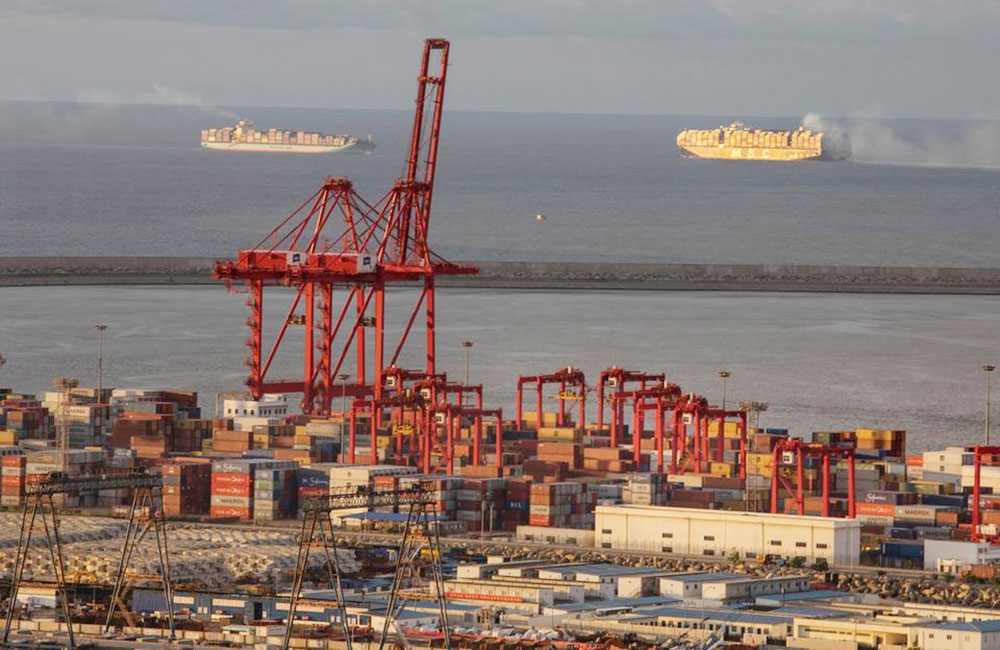
Trapped between Asian giants, can Sri Lanka's foreign policy stay neutral?
Last month’s eagerly awaited general election in Sri Lanka ended with a landslide victory for the Sri Lanka People’s Front, led by former President Mahinda Rajapksa who was formally appointed as prime minister for a five-year term.
The party gained 145 seats to obtain a near two-thirds parliamentary majority, underlining public support for the government’s successful management of Covid-19 and securing the mandate of President Gotabaya Rajapaksa, the younger brother of Mahinda elected in 2019.
Speaking with the Asia Society after the younger Rajapaksa’s triumph last November, Dinusha Panditaratne, an expert on Sri Lankan foreign affairs, said the new president’s view of Sri Lanka’s place in the world could be summarised as “Sri Lanka must develop itself,” alluding to an emphasis on the word “development” which appeared over a 100 times in Rajapaksa’s election manifesto.
Central among the government’s domestic challenges will be to revive a heavily indebted economy expected to contract by 3.2 percent, with the pandemic hitting the country’s tourism industry, which already faced a downturn after the Easter terrorist attacks in 2019.
To do so, Colombo plans to drive an economic development agenda by itself and as a partner with other countries while leveraging its strategic importance.
“The new administration will be able to take more decisive steps given the ideological alignment of the prime minister, president and parliament,” Dr. Kadira Pethiyagoda, a foreign policy expert and author of ‘Indian Foreign Policy and Cultural Values’, told TRT World.
Pethiyagoda suggested that a development-led engagement with China and its flagship Belt and Road Initiative (BRI) would feature prominently, as a realist approach to foreign policy that balanced great powers like the US, China and India with its own interests was likely to be pursued.
A crushing $55 billion debt burden, coupled with geopolitical competition underway in the Indian Ocean, are likely to be significant factors in determining the direction of its foreign policy.
Asia First?
In the immediate aftermath of the August election, a number of developments might indicate that the orientation of the government’s foreign policy has begun to take shape.
One has been the responsibilities assigned to the newly appointed Minister of Foreign Relations Dinesh Gunawardena, who now wields the ability to reevaluate existing bilateral agreements and remove clauses considered economically or socially harmful.
Another is the creation of the ‘state minister of regional co-operation’ portfolio, to be helmed by Tharaka Balasuriya, a member of parliament known for his focus on financial and economic issues.
Among Balasuriya’s duties will be to foster trade links with Asian nations and strengthen ties with regional multilateral bodies like the South Asian Association for Regional Cooperation (SAARC) and Bay of Bengal Initiative for Multi-Sectoral Technical and Economic Cooperation (BIMSTEC).
Pethiyagoda believed that the new ministerial portfolio “sends a signal of the focus the administration will place on South Asia and Asia more broadly.”
“An Asia-first approach aligns with the government’s ideals and the views of much of its political base,” he said.
An Asia-centric foreign policy was echoed by retired navy admiral Jayanath Colombage, part of a cabinet reshuffle that saw him appointed as secretary to the ministry of foreign relations, a post traditionally held by career diplomats.
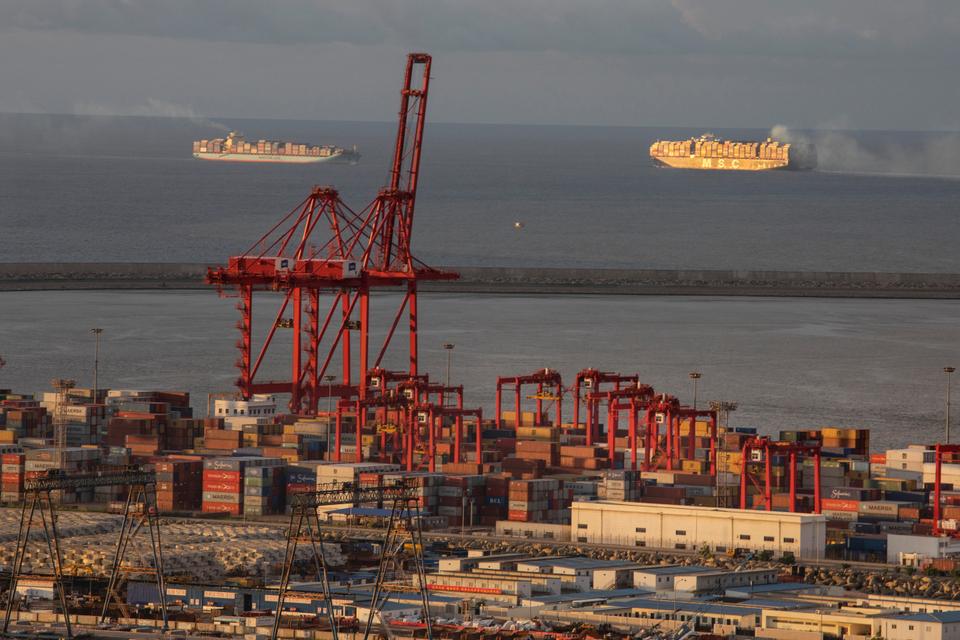
Given Sri Lanka’s desire to acquire much-needed investment to jumpstart its ailing economy, forming expedient partnerships in Asia presents less hurdles than it does in the West.
“If you look to the US or Europe, the issue of human rights crops up, which is less the case with potential Asian partners,” Price told TRT World, adding that Colombo’s tilt towards Asia would take place while resisting a binary choice between India and China.
A Senior Analyst at Control Risks, Hemant Shivakumar maintained that these developments will not come at the expense of economic ties with Western nations.
“Countries like the EU and the US will remain key export destinations for the majority of Sri Lankan goods and products, and it is unlikely that the government will imperil these economic avenues,” he told TRT World.
‘Debt-driven’ diplomacy
Ultimately, Colombo will have to reconcile the competing interests of two Asian giants vying for influence in the Indian Ocean.
In an attempt to assuage New Delhi’s fears of Colombo being ensnared by Beijing, Colombage reiterated that “as far as strategic security considerations go, it's an ‘India first’ approach.”
The stance will be welcomed by Indian Prime Minister Narendra Modi’s government, who was the first to congratulate the Rajapaksa following August’s elections.
For India, Sri Lanka is increasingly viewed through the prism of its strategic maritime objectives, and it has long harboured concerns over the growing Chinese footprint on its southern neighbour’s shores, heightened after a controversial ‘debt-equity swap’ of the Hambantota Port to Beijing in 2017.
Fears that China is practicing ‘debt-trap diplomacy’ are unfounded; a Chinese SOE paid the Sri Lankans to lease Hambantota Port and provided Colombo with liquidity to repay Western creditors, to which it owes the majority of its debt.
“It was poor decision-making on the Sri Lankan side that led to the debt more than any kind of Chinese scheme,” said Price. “The problem with the previous Rajapaksa government was that there were a lot of vanity projects, and Chinese investment poured in because they wanted them to.”
If there is an underlying logic that will drive Sri Lankan diplomatic strategy, it is economic – and India might be at a disadvantage despite the positive rhetoric coming from the new government.
The overriding imperative for the Rajapaksas is to reduce the country’s foreign debt burden and partners will be prioritised on the basis of who can provide funding to stimulate commercial activity. If India cannot deliver on implementing projects and spurring investment, the administration will look elsewhere.
“Sri Lanka needs financing and infrastructure investment, and China can do it better than India. China’s capacity to build is greater than India’s, and its pockets are deeper. Particularly now with India’s economy taking a major hit,” Price noted.
“If Sri Lanka was not looking to be beholden to China, looking to the Southeast Asian countries would make a lot of sense.”
There is enough evidence to suggest that Sri Lanka will continue to deepen engagement with other Asian states.
“The previous government between 2015 and 2019 had stepped up economic and commercial relations with Singapore and Malaysia,” Shivakumar said, highlighting that Singapore was among the top ten investors in Sri Lanka and Malaysia had indicated in 2018 plans to pursue a free trade agreement. Bangladesh and Japan could follow soon.
Shivakumar also believed that the Rajapaksa administration will continue to favour economic ties with China, despite security objections from those like India.
“Effectively, though the [Sri Lanka] government will seek to pursue commercial opportunities with India and Japan to help offset domestic criticism over dependence on China, this will remain limited.”
In May 2019 India and Japan signed an MoU with the government for a high-profile Colombo Port project worth $500 million, which faced domestic opposition from parties who saw India and Japan following China’s lead in trying to “spread their tentacles” in the country’s strategic assets.
The government assured both sides that the project would be expedited after the elections were over, but questions remain.
Foreign ports are a transshipment hub for nearly 30 percent of Indian export-import cargo and the Colombo port accounts for a large chunk of it, making Sri Lanka an invaluable “blue water” access point for India.
Washington’s $480 million grant for development projects has also faced setbacks.
“Alternatively, the government will likely intensify efforts to secure a moratorium from foreign lenders on debt repayments even as it initiates fresh negotiations for a new IMF loan programme,” Shivakumar added.
While the government hardly wishes to get involved in a Sino-Indian or US-China power struggle, it may not have a choice as it seeks to preserve its long practiced policy of non-alignment. With heightened external geopolitical fissures in the region, balancing infrastructure diplomacy between China, India and the US will be a daunting challenge.
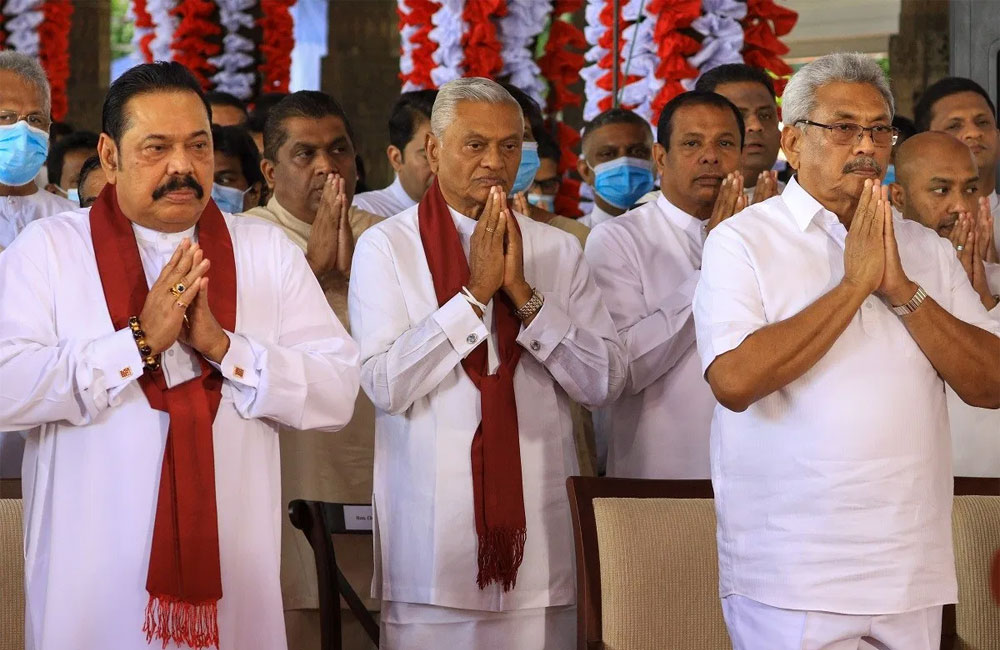
Rajapaksa’s stranglehold choking Sri Lankan democracy
Sri Lanka’s ruling Rajapaksa family has ushered in a new era of authoritarian politics, a concentration of power that is strongly backed by former and serving military top brass and the influential Buddhist religious community.
Rajapaksa family members dominate Sri Lanka’s political scene. Gotabya Rajapaksa is president, his brother Mahinda is a former president and is now prime minister, while another brother, Chamal, is irrigation minister and state minister of internal security.
Centralization of control has allowed the Rajapaksas to modify the constitution to their advantage as long-established opposition parties face internal divisions after rejection at presidential and parliamentary elections in 2019 and 2020.
The passage last year of the 20th amendment to the constitution was a watershed in the slide to authoritarianism by re-establishing the all-powerful executive presidency, a position of power that has allowed the Rajapaksas to browbeat religious and ethnic minorities and the political opposition into submission.
A recent report by the United Nations Human Rights Council said developments over the past year “have fundamentally changed the environment for advancing reconciliation, accountability and human rights in Sri Lanka, eroded democratic checks and balances and civic space, and reprised a dangerous exclusionary and majoritarian discourse.”
The report further highlights how a combination of “militarization of civilian government functions”, “reversal of constitutional safeguards”, “political obstruction of accountability for crimes and human rights violations”, “majoritarian and exclusionary rhetoric”, and increasing “surveillance and intimidation of civil society and shrinking democratic space” has dramatically constricted Sri Lanka’s political landscape.
This has left little to no room for political mobilization and generation of a counter-political narrative of the kind the National Movement for Social Justice (NMSJ) was able to produce in 2014-15 during the previous rule of Mahinda Rajapaksa.
The NMSJ, an independent collective of civil society and political parties founded by reformist Buddhist monk Maduluwawe Sobitha Thero, was at the center of the mobilization of public opinion, civil society and political parties that defeated the executive presidency of Mahinda Rajapaksa in January 2015.
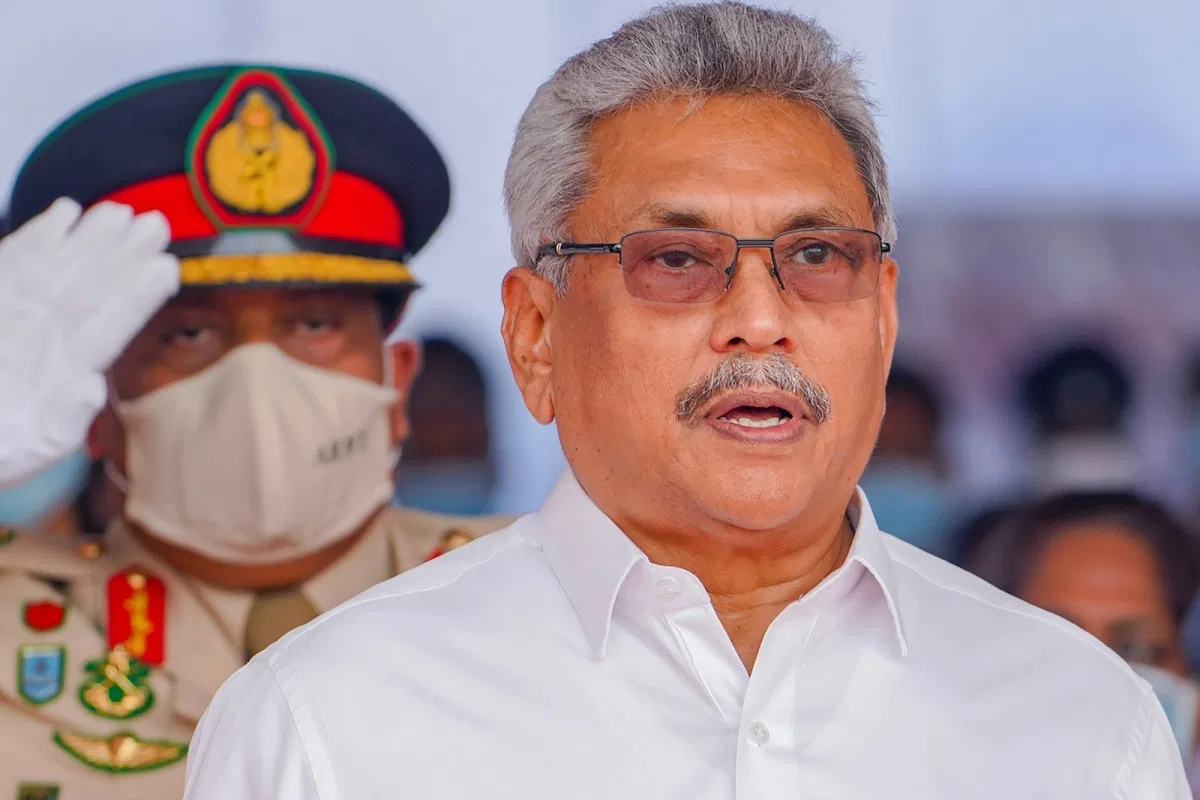
The momentum generated by the NMSJ led to the passage of the constitution’s 19th amendment, which significantly curtailed presidential powers.
The NMSJ has become largely inactive since, however. Ever since the death of its founding leader, political parties have been unable to generate momentum for more democratizing constitutional and institutional reforms.
Beset by internal divisions and power struggles, opposition political parties were unable to block Gotabaya’s 20th amendment, which recently re-established the all-powerful executive presidency.
That’s taken Sri Lanka back to the 1980s, an era when J R Jayewardene of the United National Party made himself the all-powerful executive president and through chronic abuses oversaw the emergence of Tamil militant insurgency led by the Liberation Tigers of Tamil Elam (LTTE) and decades of civil war.
Sri Lanka’s main political parties lack the parliamentary clout to block the Rajapaksas’ political onslaught. The once-invincible United National Party (UNP), Sri Lanka’s oldest political establishment, was routed in the 2020 parliamentary elections.
The UNP was unable to secure a single seat, with party stalwarts including leader Ranil Wickremesinghe losing their seats in spectacular fashion. Sri Lanka Freedom Party (SLFP), another long-time party, could also win only one seat.
This election was also a political reality check for the leftist Janatha Vimukthi Peramuna (JVP), which has a history of at least two armed insurgencies and traditionally a considerable electoral following. Yet it saw its parliamentary strength reduced to three seats, one of them from the national list.
The JVP-led National People’s Power (NPP), a coalition with smaller parties, managed to win only two seats electorally, barely passing the dreaded 3% threshold.
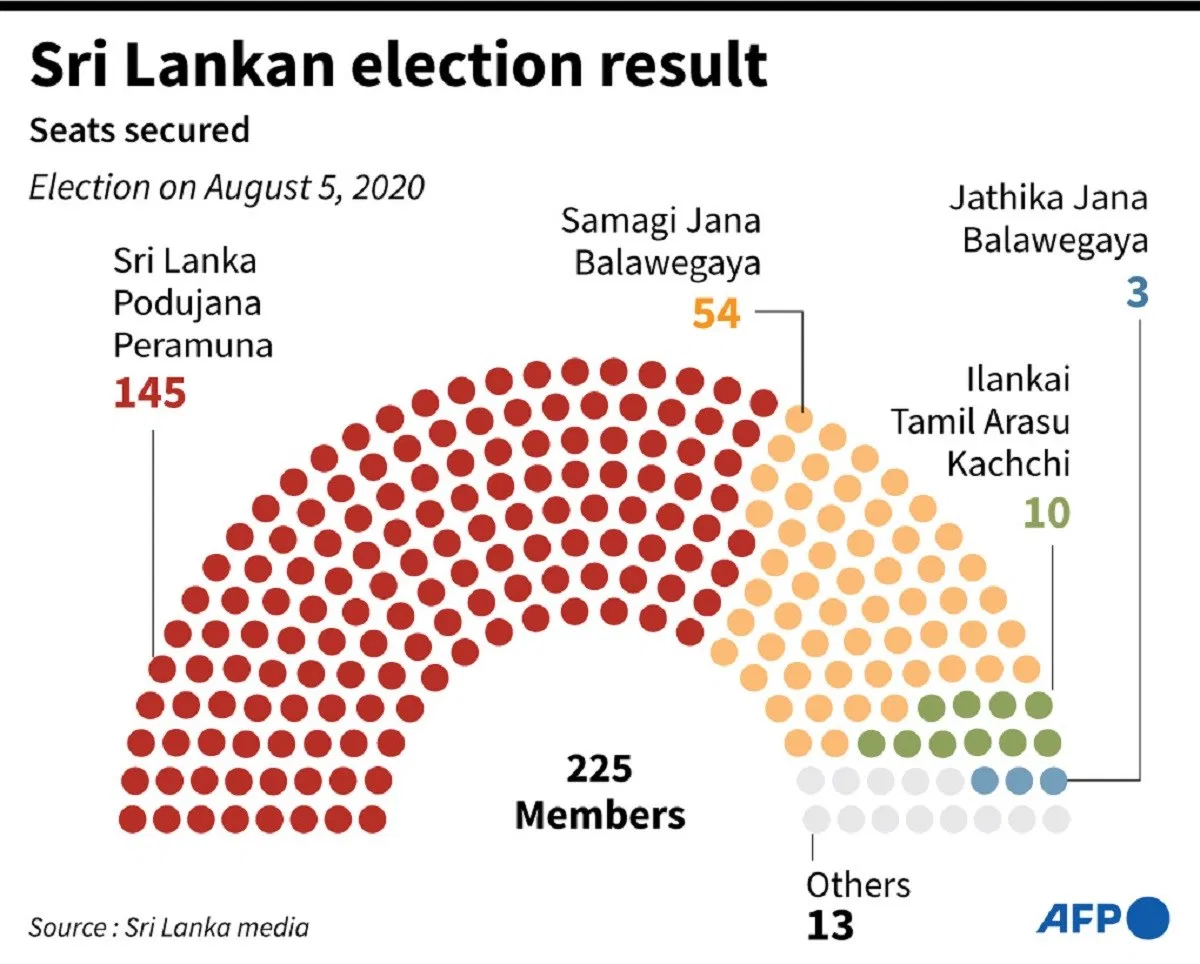
The reason the UNP and SLFP suffered so badly at the polls relates to their poor performance in the last coalition government. Both were a part of the misnamed National Unity Government between 2015 and 2019.
Both parties were at the heart of the 2018 constitutional crisis that allowed then-president Maithripala Sirisena, who was leading the SLFP, to dismiss prime minister Wickremesinghe, who was atop the UNP.
While Wickremesinghe was eventually restored to power, the crisis left an indelible imprint on Sri Lanka’s political and economic landscape, allowing hardliners to propagate a different sort of power-structure, one that would make parties and parliament largely irrelevant.
By 2019, the political landscape was thus ripe for a shift towards an executive presidency. The Rajapaksas were not only able to sense the shifting public mood, but they actively nurtured it to their advantage to win a near two-thirds majority in parliament.
However, even though their ruling Sri Lanka Podujana Peramuna (SLPP) party was unable to win the required two-thirds majority to freely amend the constitution, the Rajapaksas were able to buy crucial votes from within the opposition parties to pass the crucial 20th amendment.
Whereas all opposition parties including the Samagi Jana Balawegaya (SJB), Sri Lanka Muslim Congress and All Ceylon Makkal Congress were opposed to the amendment, several of their MPs still voted in favor.
As it stands, not only are the parties currently present in the parliament internally divided, they have also largely failed to establish a united stand against the 20th amendment’s implementation.
Sajith Premadasa, who heads the SJB, the largest opposition party with 54 seats, has been unable to unite the opposition against the amendment.
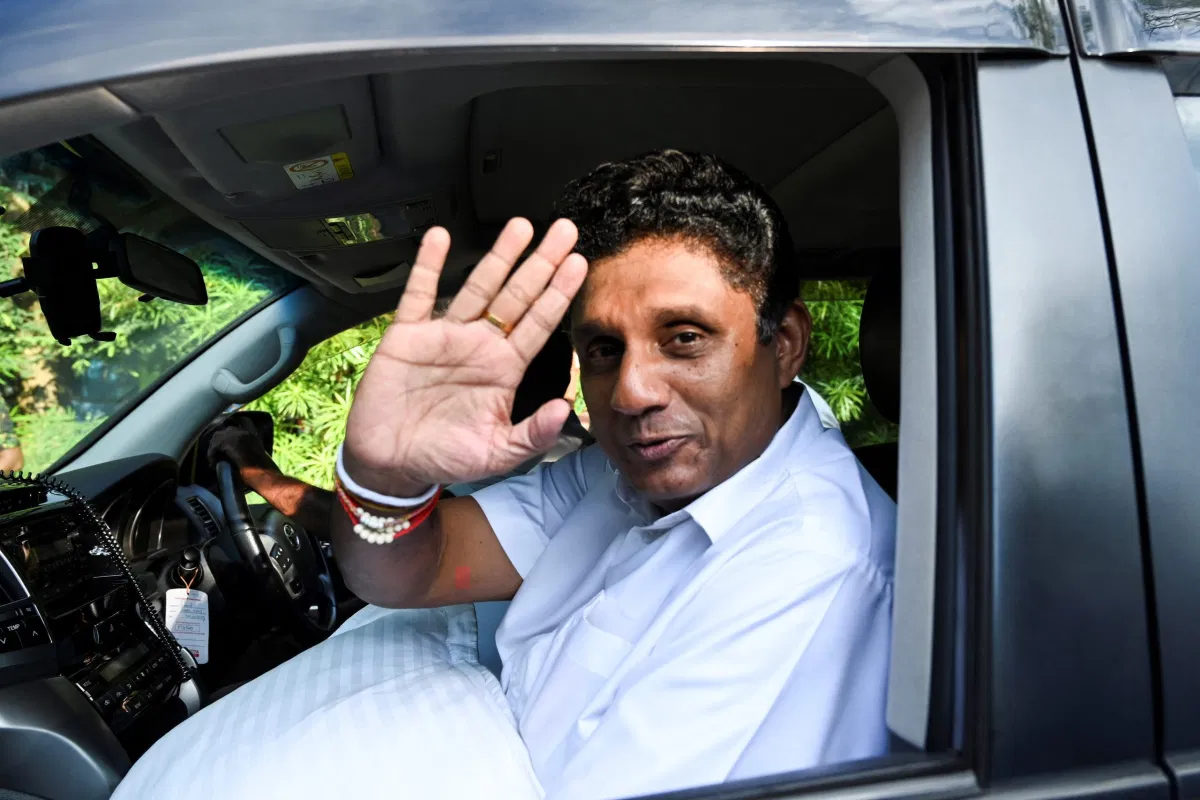
Instead, as one member of the SJB who spoke to Asia Times said, a majority of these parties including the SJB have largely accepted the anti-democratic changes made through the 20th amendment.
Premadasa, who is already preparing for the next presidential elections, largely agrees with Gotabaya that Sri Lanka needs to be transformed into a “disciplined society”, a task made easier through strong executive powers in the hands of the president.
Premadasa thus has nothing different to offer to the masses. While he criticizes the Rajapaksas, he largely emulates their politics in terms of both their support for an executive presidency and their relationship with the Buddhist religious community.
According to a member of SLMC, who spoke on the condition of anonymity, “Sajith is very much another Rajapaksa in terms of how he invokes… Buddhist nationalist ideology” to win electoral support.
He has “learned some crucial political tactics from the Rajapaksas” and “visits temples and chapters of the Buddhist clergy to win the confidence of the majority Sinhala Buddhists. The Rajapaksas have recorded success in doing this and Sajith is playing the same cards now.”
Small and marginal Tamil and Muslim political parties, on the other hand, have recently tried to mobilize against the rising authoritarianism.
A recently organized “Long March”, which started from Pottuvil in the east to Point Pedro in the north, showed how Muslims and Tamils are increasingly drawing closer in their opposition to the Rajapaksas.
The SJB and Sajith, however, were conspicuous absent from the Long March, showing how ethnic and religious minorities are on the outside of a rising power struggle between Sajith and the Rajapaksas.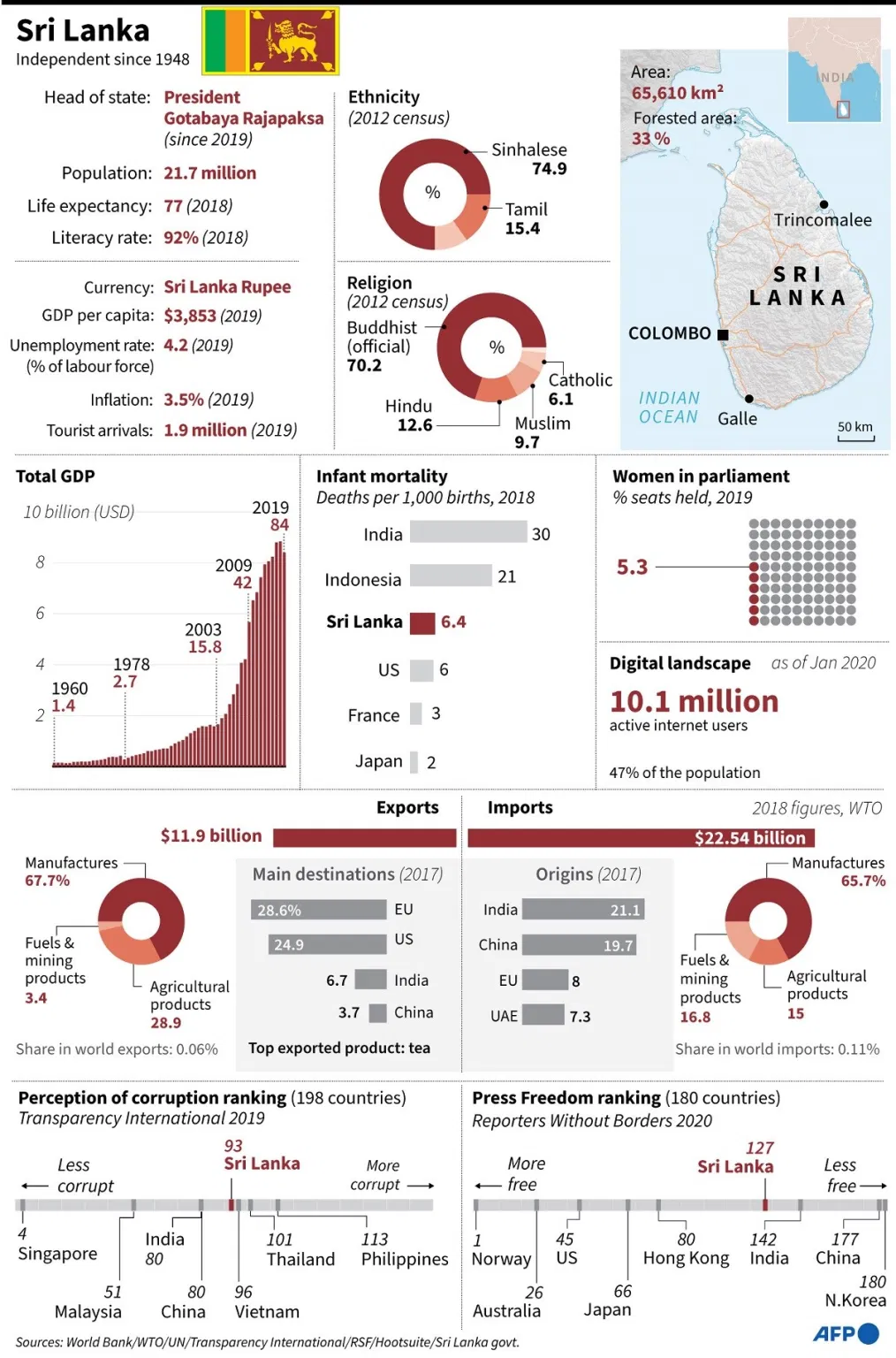
For Sajith, participation in the Long March would be a risky venture. For him, antagonizing the Sinhalese Buddhist nationalist majority in the south entails a significant political risk, one that could cost him the next election.
“Any display of empathy for the minorities would have allowed the Rajapaksas to project him as an anti-Buddhist figure,” said the SLMC member.
Yet Sajith’s politics are now increasingly weakening the political opposition, preventing it from creating concentrated pressure on the Rajapaksas and their rising authoritarianism.
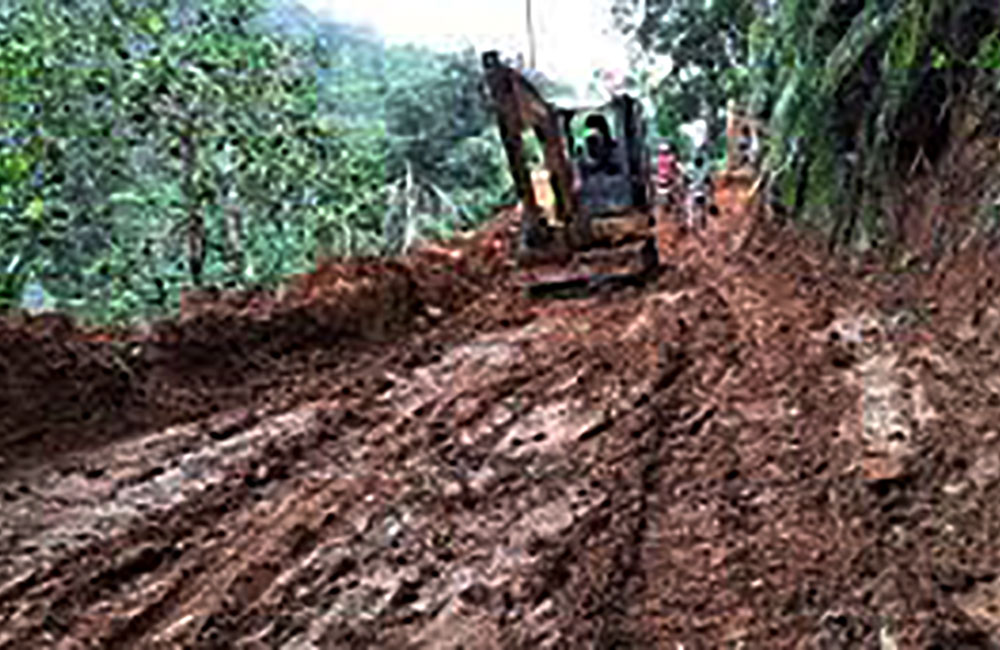
Environment and Development – Choose what?
Villagers in “Lankagama” a very small village in Galle district bordering Gin ganga (river) and Sinharaja rainforest and few Environmental activists have conflicting claims over widening and repair of an existing 10 ft partly cemented road. The villagers claim their village is over 500 years old and live with minimum basic common utilities that are sub-standard. They claim they have been requesting every government to widen and repair their access road to Neluwa, but no government has ever delivered on the promise. Neluwa hospital is where pregnant women must be taken a distance of about 18 kms where transport and travel is the most painstaking thing in an emergency. Tragedies that occurred in the past the villagers say, have not been of any worth to the media.
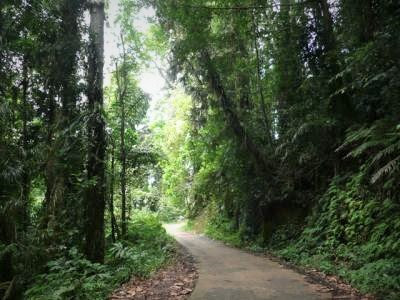 Existing road
Existing road
The existing road through Sinharaja - photo courtesy Lakdasun trip] That the village is over 500 years old is disputed by Environmentalists. A senior activist posting on FB said it is sheer romanticising of the village. Neluwa Divisional Secretariat (DS) sources accept the village is around 300 years in existence. Lankagama villagers say there are around 700 families. Neluwa DS website says the population of Lankagama grama niladhari area was 655 in 2018. Perhaps, the figure 700 quoted by villagers is the present number of “people” and not “families”. Geographically, Lankagama grama niladhari area is one of the largest in Neluwa DS division.
Environmental activists claim the new Rajapaksa government is using security forces to widen and carpet the Lankagama – Neluwa road to construct tourist hotels in Sinharaja. Yet, there is no clear and confirmed information on hotel construction. An NGO, “Centre for Environmental and Nature Studies” (CENS) writing to the President, the Ministry of Environment, the Central Environment Authority and Wildlife Department claim the road that is being constructed is “illegal” and is within the Sinharaja World Heritage Site, a good enough reason for them to write to the UNESCO as well.
Environmentalists believe the environment cannot be compromised for “human development”. A very short comment I posted on FB regarding this controversy, was immediately responded to by a very respected senior Environmentalist. He was very frank asking, “Do you say we have to compromise a virgin rainforest, which is also a national and a world heritage for human development?”
This in fact is the main issue. People in the village want their road done. Environmentalists don’t. People in the village believe widening the existing road is a long overdue necessity for them. Environmentalists don’t. People in the village believe widening the road will not be a threat to the national and world heritage site. Environmentalists don’t. People in the village who want the road done, live adjoining the Sinharaja forest reserve. Environmentalists don’t.
On 28 November last year, Principal of the Lankagama model school organised a felicitation ceremony for his own teaching staff, attended by the Neluwa DS, parents and few others. At this ceremony he said some years ago, most teachers came late on Monday from distant places, roughed out the whole week and left early on Friday. Now, most teachers are from neighbouring villages. They walk to school every day, a distance of about 06 to 08 kms each way. They have been exceptionally helpful and committed in improving the education of Lankagama children, a service that needs to be appreciated. The school has around 175 children in daily attendance and has classes up to G.C.E O/L.
An isolated village where teachers must walk many kilometres to school and back, says a lot about lack of basic needs. Improvement in the quality of life, easy access to public utilities and services, better and improved linkages to markets, are all part of development people want. They in fact are the most basic needs in present day human life. All these depend on good and efficient transport and commuting. That is why roads become an indispensable part of daily life. Lack of, absence or denying of basic needs, define poverty in its crudest manner.
What environmentalists stand for is this crude poverty, in the name of safeguarding the environment. That is precisely the undertone the question posed to me carried; we don’t compromise the environment for human development.
This hard line, blank position compels environmental NGOs to draw on their own assumptions as “facts” to argue their case. The “illegal road” mentioned by CENS as running through Sinharaja, had been there for many decades as a gravel road, used by villagers in Lankagama and in neighbouring areas. Out of the 18 kms, only a very short distance of about 03 kms run through Sinharaja forest reserve and that too in short segments. Short or long distance, any path people use for daily commuting over decades without any restrictions and objections recorded, becomes legal by default. In 2010, this road was paved with concrete, from funds allocated by State authorities through Neluwa DS. What then is “illegal” is therefore never imaginable. Ironically, it is such factually distorted and wrong information these environmental NGOs often provide to State authorities and international organisations to gain legitimacy to their protests.
That apart, getting back to the dichotomy “human development vs environment”, never in the history of human civilisation has progress been achieved, without breaching and trampling nature and environment. The 2,500 BC Indus river civilisation Mohenjo-Daro and Harappa, was a fire burnt brick based civilisation. Without doubt, clay was dug up in mega quantities for bricks and forests were cut down to burn bricks in constructing big and orderly cities and roads. So were all other civilisations, whether constructions were wood, or iron based.
In ancient Ceylon too, construction of giant tanks for agriculture would not have been possible without breaching and damaging the environment. Culawamsa, the Pali chronicle says, King Parakramabahu restored tanks and built new tanks, all totalling 163 major tanks. One that covers an area of 30 sq.km is named after him as “Parakrama Samudraya”.
In post independent Sri Lanka all “development” initiatives from colonisation schemes to hydro-power projects came with restoration of reservoirs, construction of large dams and tunnelling. From Gal-oya in 1952 to accelerated Mahaweli development in 1979 and Samanala weva project in 1986, all such projects stepped on the environment. In the past, Gal-oya, Kantale, Rajanganaya and other similar developments were technically approved, but never had EIAs and none would know what environmental damage they brought about. Fact nevertheless is, new habitats, new eco-systems have evolved thereafter.
We have come a long way from Parakramabahu and from Gal-oya. We have also learnt much from the accelerated Mahaweli development programme. We have expertise, technology and past experience to “plan development better and save the environment better”. What is still lacking is a new people centric thinking in environmental activism. Worst is that most environmentalists have also turned Sinhala-Buddhist “patriots” on the run. They and their NGOs also believe “people are outsiders to environment” and human development is no priority. They work on the premise; it is their duty to fight legal battles to stop any project they decide should be stopped and protest any they believe cause destruction.
We need to come out of this primitive thinking. This thinking in environmental NGOs as exhibited in Lankagama contributes to sustained poverty, denying development. We need to know, “human development” cannot be compromised as much as the environment cannot be played about with, as “Climate Change” clearly teaches. We therefore have to learn that “protests” are no answers. Though isolated, Lankagama by the side of Sinharaja rain forest is a classic case that challenges these protesting environmentalists to come up with their “solution” to the conflict without denying the people their right to better and improved life.
Environmentalists have to leave agitating against single, isolated issues and propose a “National Environment Policy” that should cover everything from urban air and sound pollution to landslides, from domestic waste disposal to surgical and industrial waste, from coast conversation to reforestation and management, from urban planning to town and housing development and honouring all international conventions the SL government is a signatory to and have ratified and should ratify. It should include regulating and monitoring agencies and have a special complain investigating mechanism, independent of ministries and politics.
Such cannot be drafted and concluded by “experts” alone. This requires an open social discourse at every stage of its drafting. It needs to draw the participation of social activists and community leaders. In short, when the “National Environment Policy” becomes law, it must be a social product owned by the People.
The ancient style of taking up issues as and when they become politically important and worth for environmental NGOs to agitate and protest is no more valid. Environmentalists must leave those old sectarian practices and face the challenge of drafting a “National Environment Policy” with people’s participation and take over the responsibility of social monitoring and lobbying for answers within the national policy.
In post COVID-19 global and national life, this is a new era with a new challenge demanding new answers. An era, where strengthening democracy is the beginning. Hence social participation and ownership in planning and implementation. I would not know if environmentalists could stand up to this new challenge. Lankagama therefore would be the first test for environmentalists in post COVID-19 Sri Lanka.
Kusal Perera
2020 August 21
Page 1 of 10
